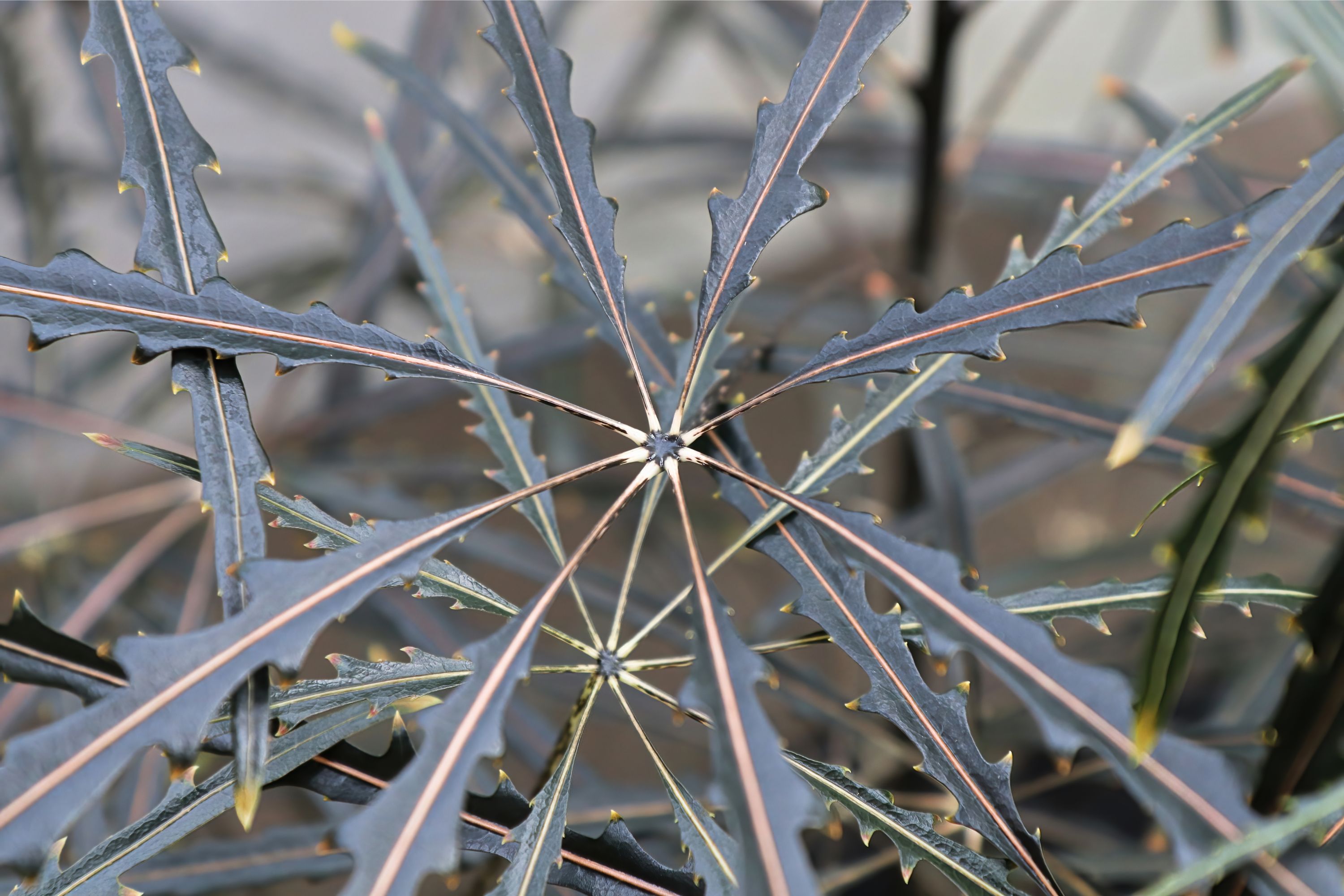False aralia
(Plerandra elegantissima)

Description
Plerandra elegantissima, commonly known as False Aralia or Spider Aralia, is a striking tropical plant that belongs to the Araliaceae family. It is a native of the Pacific Islands, specifically Hawaii and the Solomon Islands. This plant is popularly grown as a houseplant in many regions around the world due to its lush, glossy foliage and low maintenance requirements. In this article, we will explore the features and growing requirements of Plerandra elegantissima in detail. Description Plerandra elegantissima is a slow-growing, evergreen shrub that can grow up to 6 feet tall in ideal conditions. It has a distinctive upright growth habit, with long, thin stems that support a dense crown of pinnately compound leaves. The leaves are deep green and have a glossy, waxy texture that makes them stand out. They are divided into several small leaflets, with each leaflet being around 2-3 inches in length. The leaflets are oval in shape and have finely serrated edges. The plant produces small, inconspicuous flowers in late summer or early fall, which are followed by small black berries. However, these flowers and berries are not a significant feature of the plant, and it is primarily grown for its foliage. Growing Requirements Light: Plerandra elegantissima prefers bright, indirect light. It can tolerate low light conditions, but this will result in slower growth and less vibrant foliage. Direct sunlight can scorch the leaves, so it is best to place the plant in a spot that receives filtered or diffused sunlight. Temperature: Plerandra elegantissima is a tropical plant and prefers warm temperatures between 60-80°F. It can tolerate temperatures as low as 50°F, but prolonged exposure to colder temperatures can cause the plant's leaves to turn yellow and drop. Humidity: This plant thrives in high humidity levels between 50-70%. If the air is too dry, the leaves can turn brown and brittle. To increase humidity levels, you can place a humidifier near the plant or mist it with water regularly. Watering: Plerandra elegantissima prefers to be kept evenly moist but not waterlogged. Allow the top inch of soil to dry out before watering the plant thoroughly. During the winter months, reduce watering frequency, as the plant's growth slows down. Soil: This plant prefers well-draining, nutrient-rich soil. A soil mix that contains peat moss, perlite, and vermiculite is ideal. It is also essential to ensure that the pot has adequate drainage holes to prevent water from accumulating at the plant's roots. Fertilizer: Plerandra elegantissima benefits from regular fertilization during the growing season (spring and summer). Use a balanced, water-soluble fertilizer once a month to provide the plant with essential nutrients. Propagation Plerandra elegantissima can be propagated by stem cuttings or by division. Stem cuttings should be taken in the spring or early summer when the plant is actively growing. Select a stem that is around 4-6 inches long and has several leaves attached. Remove the bottom leaves and dip the cut end into rooting hormone. Plant the cutting in a pot filled with well-draining soil, and keep it in a warm, humid location until new growth appears. To propagate by division, carefully remove the plant from its pot and separate the roots into several sections. Each section should have a few stems and roots attached. Plant each section in its own pot, and water thoroughly. Common Problems While Plerandra elegantissima is generally a hardy plant, it can still encounter some problems. Here are some of the common issues that plant owners may encounter: Overwatering: Overwatering can lead to root rot, which can cause the plant's leaves to turn yellow and wilt. To avoid this issue, it is important to ensure that the plant is not sitting in standing water, and the soil is well-draining. Underwatering: If the plant is not getting enough water, the leaves may start to droop and turn brown at the edges. To fix this issue, water the plant thoroughly and ensure that the soil is evenly moist. Low humidity: Plerandra elegantissima prefers high humidity levels, and if the air is too dry, the leaves may start to brown and curl at the edges. To increase humidity levels, place a humidifier near the plant or mist it with water regularly. Pests: Spider mites, mealybugs, and scale insects can infest Plerandra elegantissima. If left unchecked, these pests can cause leaf discoloration and leaf drop. Regularly inspect the plant for signs of pests and treat with an appropriate insecticide if necessary. Cold temperatures: Plerandra elegantissima is a tropical plant and does not tolerate cold temperatures well. If the plant is exposed to temperatures below 50°F, the leaves may turn yellow and drop. To avoid this issue, keep the plant in a warm location and protect it from cold drafts. By keeping an eye out for these common problems and taking appropriate measures, plant owners can help ensure that their Plerandra elegantissima stays healthy and vibrant.
Taxonomic tree:







